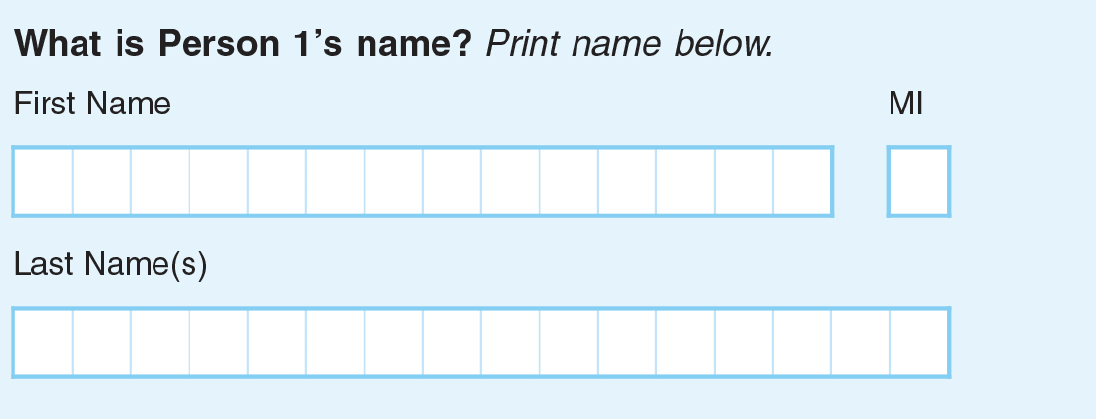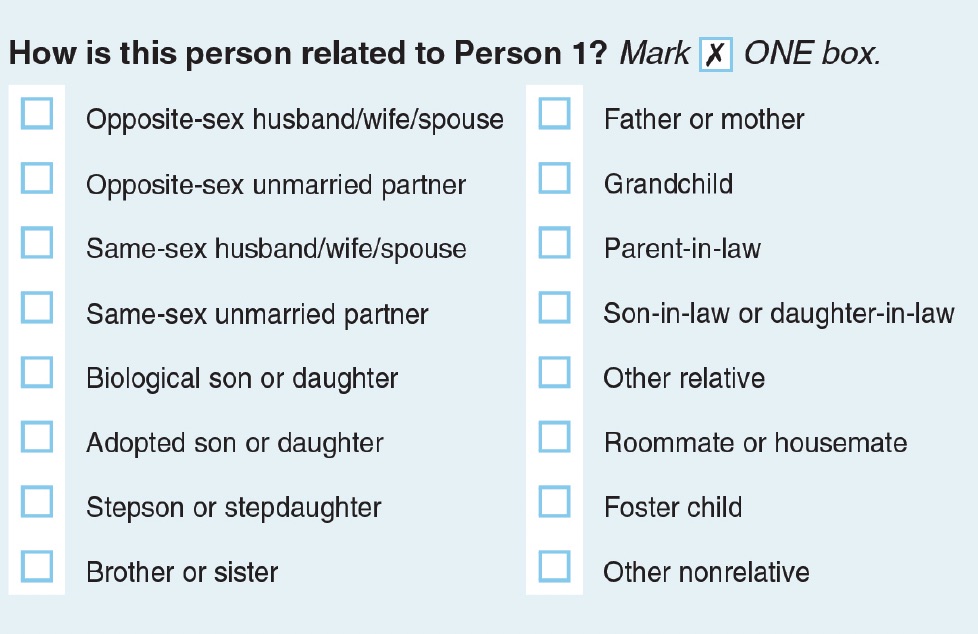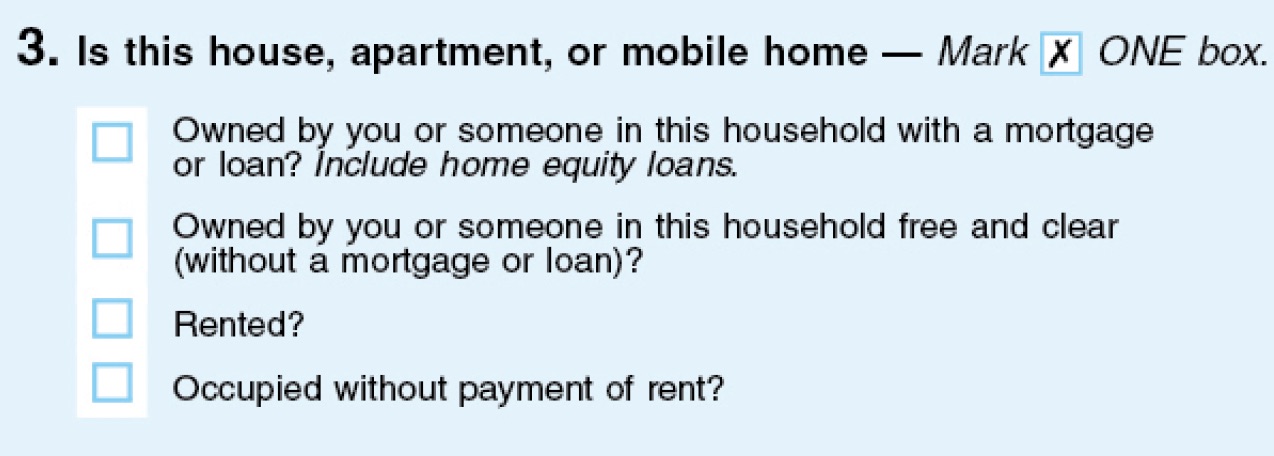Beth Jarosz
Senior Program Director

March 23, 2019
Senior Program Director
Contributing Senior Writer
UPDATE: 2020 Census operations are changing in response to the COVID-19 pandemic. On March 20, 2020 the Census Bureau announced operational adjustments for the 2020 Census.
Notices for the 2020 Census started going out on March 12, 2020. For the first time everyone will be able to respond online, by phone, or by mail. This primer explains the questions and how the information will be used.
By law, the U.S. government is required to count the number of people living in the United States every 10 years. Getting an accurate count is important because census numbers impact daily life in the United States in many ways. For example, census data are often used to determine how much federal funding is allocated for important projects and services that benefit local communities. The census also plays a vital role in our nation’s system of government by determining how many representatives will be sent to Congress from each state.
Because getting an accurate count is so important, the process is designed to be fast, easy, and safe. On average, it takes no more than 10 minutes to answer the questions on the census.
During the first census in 1790, census takers visited nearly every U.S. home to gather data.
In 2020, households will have the option of responding online, by mail, or by phone. The Census Bureau expects many households to complete the questionnaire online, using instructions received in the mail. These instructions will also include information about how to respond by phone. Some households will receive a printed questionnaire which they can mail, postage-free, back to the Census Bureau. A small percentage of households, primarily located in remote areas of the country, will be visited by a census taker who will help collect the necessary information to complete the form.
Most housing units in the United States that receive mail at their physical location will receive a letter by mail with instructions on how to complete the census questionnaire. Housing units include houses, apartments, cabins, mobile homes—pretty much any place where people live in the United States. In areas where the majority of housing units do not have mail delivered to their physical location, census workers will leave questionnaire packages at every identified housing unit.
The census process also includes special provisions to count people who are homeless and those in other types of living quarters, such as college dorms, military barracks, ships, prisons, nursing homes, and homeless shelters.
The person in the housing unit who fills out the census questionnaire or talks to the census taker is known as Person 1. Typically, Person 1 is the owner/co-owner or renter/co-renter of the housing unit. Person 1 answers general questions about the housing unit, including the number of persons living there and whether the dwelling is rented or owned. Person 1 also provides the following information about each household member:
The census questionnaire asks for people’s names to ensure that each household member is counted only once. Names, along with other information in the questionnaire, helps census workers “de-duplicate” the data—which means to remove extra records if a person appears more than once in the count.

By identifying the relationships between people in a household, census data enable us to recognize important trends in our society, such as:
Together, these responses help provide us with a snapshot of current American households. The information is also used to determine funding for federal nutrition and education programs, housing programs, and other social services that provide benefits to many U.S. communities.
How are household relationships determined? It all starts with Person 1, who serves as the “Reference Person” for other household members. Everyone living in a household is grouped into categories according to their relationship with Person 1.
The census seeks to identify husbands and wives, children and step-children, and siblings, along with other family and non-family relationships. With the 2020 Census, people will be able to identify for the first time as a “same-sex husband/wife/spouse” or as a “same-sex unmarried partner.”

In the U.S. Census, each individual is asked to identify themselves as either male or female. These data are used to allocate federal funding for education under the Higher Education Act of 1965 and to enforce rules against gender-based discrimination.
Many stakeholders were disappointed that the Census Bureau did not include additional options for sexual orientation and gender identity in the 2020 Census.1

The questions about age and date of birth help to ensure that each person’s age is reported accurately and that each person is counted only once. For example, a parent might incorrectly write age 1 for their 11-month old child whose birthday is on April 15, 2020. The correct age on Census Day (April 1, 2020) is actually 0 (less than 1 year old). The birth date information helps Census Bureau staff correct these kinds of common rounding mistakes in how people’s ages are reported on the census form.
Age data are used in planning government programs that provide funding or services for specific age groups. School facilities planning and Head Start funding both rely on Census age data. Age data are also used in programs that provide services and assistance to seniors, such as the Low Income Home Energy Assistance Program. Age data are also used to enforce laws against age discrimination.

Since 1970, the census questionnaire has asked U.S. residents whether they are of Hispanic origin, and if so, which broad Hispanic group they identify with. Hispanic origin is considered separately from race in the census, and Hispanics may identify with any race.
Responses to this question are used for many purposes, such as identifying populations that may not be getting needed medical services under the Public Health Service Act and monitoring equal employment opportunities.

Data on race are used to help communities ensure equal opportunity and determine how many people are eligible for certain government programs, such as the Indian Health Service. Race data are also used to enforce rules against race-based discrimination.
The 2020 questionnaire enables individuals to select from among 15 racial categories or to write in races not listed on the form. The 2020 Census continues the option first introduced in the 2000 Census for respondents to choose more than one race. Only about 2 percent of Americans identified with more than one race in the 2000 Census. That share increased to 3 percent in 2010.
For the first time, individuals will also be able to identify their ethnic or national origin as part of the race question.
At the beginning of the questionnaire, Person 1 will provide information about whether the home is owned or rented. These data provide important information about housing trends in the United States.

The census also includes some additional questions to further help ensure that everyone in the household is only counted once and in the right place. For example, many households include members who live there on a part-time basis, such as college students who live away from home for a portion of the year or children who divide time between parents who are separated or divorced. Young children were more likely to be missed in the 2010 Census than people in other age groups.2
The 2020 Census will ask Person 1 the following additional questions:
The questionnaire also requests a telephone number in case the Census Bureau has clarifying questions for Person 1.
For More Information about the 2020 Census:
U.S. Census Bureau, Questions Planned for the 2020 Census and American Community Survey (2018), accessed at www.Census.gov/library/publications/2018/dec/planned-questions-2020-acs.html.
1Hansi Lo Wang, “Census Bureau Caught in Political Mess Over LGBT Data,” NPR (July 18, 2017), accessed at www.npr.org/2017/07/18/536484467/Census-bureau-found-no-need-for-lgbt-data-despite-4-agencies-requesting-it, on Feb. 13, 2019; U.S. Census Bureau, Subject Planned for the 2020 Census and American Community Survey, accessed at www2.Census.gov/library/publications/decennial/2020/operations/planned-subjects-2020-acs.pdf, on Feb. 13, 2019.
2William P. O’Hare, ”Assessing Net Coverage for Young Children in the 2010 U.S. Decennial Census,” International Journal of Population Research (2014).
